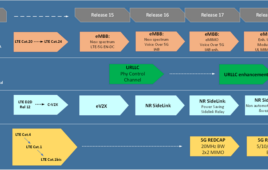BEIJING (AP) — China’s phone regulator said Tuesday it has approved Apple Inc.’s iPhone 6 for use on Chinese networks after the company promised never to install “backdoors” to give other governments access to users’ information. Apple said sales start Oct. 17.
The Ministry of Industry and Information Technology’s announcement reflected Chinese unease about the reliability of foreign communications technology following disclosures about widespread U.S. government eavesdropping.
China is one of Apple’s biggest markets and any disruption to the availability of its latest smartphone could be a serious commercial setback.
Apple, based in Cupertino, California, began delivering its new smartphone in the United States and other markets Sept. 20 but delayed its rollout in China without explanation.
Approval for use of the iPhone 6 on Chinese networks was granted after Apple “promised ‘it never constructed a so-called ‘backdoor’ for any government entity of any country in any product or service,’ and moreover ‘never will’,” the Ministry of Industry and Information Technology said in a statement.
Communist leaders are uneasy about China’s reliance on foreign technology, especially for security. Banks and major companies have been ordered to limit use of foreign information security technology. The government announced in May it would start examining foreign technology for security flaws and bar sales of products that fail.
The delay in iPhone 6 sales in China created an opening for black market traders who brought in phones from other markets. Authorities have announced the seizure of hundreds of phones from airline travelers and others over the past two weeks.
This year, Apple faced accusations by Chinese state TV that the location service on the iPhone could allow the company to steal secrets and threaten national security. The company denied it worked with any foreign governments to create “backdoor access” and said location data stays in the phone.
Apple said the iPhone 6 will be supported by all three major Chinese state-owned phone carriers — China Mobile Ltd., China Telecom Ltd. and China Unicom Ltd.
Prices will range from 5,288 yuan ($860) for a 16-gigabyte model to 6,088 yuan ($991) for a 64-gigabyte model and 6,888 yuan ($1,121) for a 128-gigabyte, the company said. The iPhone 6 Plus, with a larger screen, will be priced at 6,088 yuan ($991) to 7,788 yuan ($1,267).
Apple faces growing competition from Chinese makers of smartphones including Lenovo Group, Huawei Technology Ltd. and low-cost suppliers Xiaomi and Oppo Electronics Corp.
An official of a government-authorized economic group said at a conference that officials in Shanghai have been ordered to stop using Apple and other foreign-brand smartphones, according to Chinese media.
“Shanghai already has asked cadres all to use Huawei smartphones. Samsung also is not OK. This is called a security issue,” said the official, Wei Jianguo, secretary-general of the China Center for International Economic Exchanges, according to a transcript on the website of Caijing, a business magazine.
In a written statement, Huawei said it knew of no such government plans. The company, which is the world’s biggest manufacturer of network gear used by phone companies and is expanding into consumer devices, said it has responded to users’ expectations for security by adding features such as a fingerprint scanner to its latest products.




